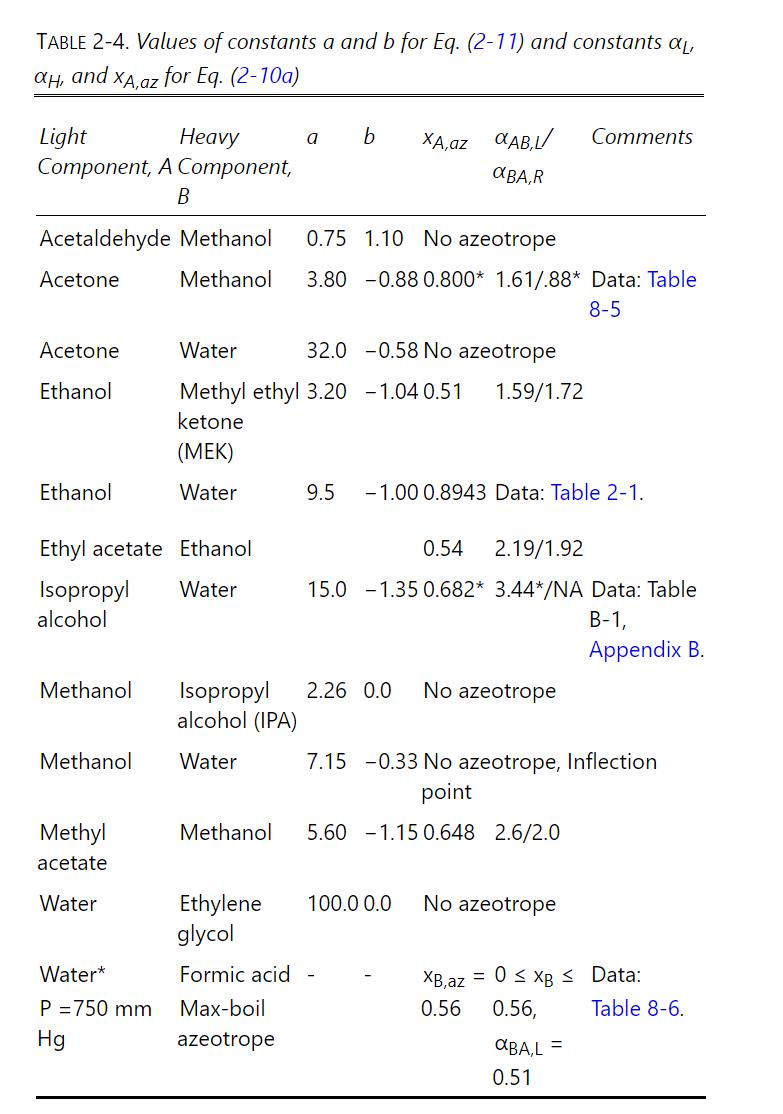We want to use Eq. (9-14) to generate binary distillation residue curves for the system isopropanol (IPA)-water.
Question:
We want to use Eq. (9-14) to generate binary distillation residue curves for the system isopropanol (IPA)-water. The first step is to compare the fit of Eq. (9-14) ( \(\mathrm{a}\) and \(\mathrm{b}\) are given in Table 2-4) with the equilibrium data (in Table B-1 in Appendix B at the back of the book). The second step is to replace \(\mathrm{W}_{\text {fin }}\) with \(\mathrm{W}(\mathrm{t})\) and replace \(\mathrm{x}_{\text {fin }}\) with \(\mathrm{x}\) ( \(\mathrm{x}_{\text {fin }}\) and \(\mathrm{x}\) are IPA liquid mole fractions) in Eq. (9-14), and set \(\mathrm{F}=1.0\). Then, plot the residue curves [isopropanol mole fraction versus \(\mathrm{D}(\mathrm{t})=\mathrm{F}-\mathrm{W}(\mathrm{t})\) ] for parts \(\mathrm{a}\) and \(\mathrm{b}\). The reason for plotting versus \(\mathrm{D}\) is then the warped time axis ranges from 0 to 1.0 .

Table 2-4

a. Initial liquid mole fraction is \(80 \mathrm{~mol} \%\) IPA to \(100 \%\) IPA.
b. Initial liquid mole fraction is \(50 \mathrm{~mol} \%\) IPA to \(0 \%\) IPA.
Step by Step Answer:

Separation Process Engineering Includes Mass Transfer Analysis
ISBN: 9780137468041
5th Edition
Authors: Phillip Wankat




